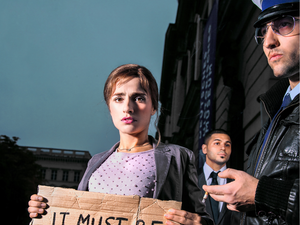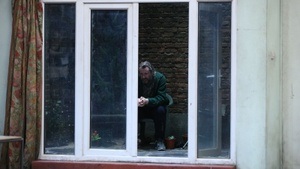PHOTO:
© Foto © 2012, Leo Seidel
Le nozze di Figaro
In the organizer's words:
In the historicizing stage sets by Herbert Wernicke, Götz Friedrich's production is still, after 35 years, an ideal platform for the ensemble of the house to present playfulness and vocal culture ... Conductor: Corrado Rovaris / Giulio Cilona; Production: Götz Friedrich; With Thomas Lehman, Maria Motolygina, Elisa Verzier, Meechot Marrero, Artur Garbas et al.Figaro and Susanna, servants at the court of Count Almaviva, want to marry and set up the apartment assigned to them in the Count's castle. While Figaro measures out the bed in anticipation, Susanna remains suspicious. She fears that the Count, whose love for his wife Rosina has long since cooled, will make use of his "right of first night". Figaro is beside himself and takes it upon himself to thwart his master's plans. He is also beset by another problem: out of financial necessity, he had once promised marriage to Marcellina, the Count's housekeeper, and is now being harassed by her. In the meantime, the page Cherubino has sought refuge with Susanna, who is busy in the Countess's bedroom with her wardrobe. The Count had caught him with the gardener's daughter Barbarina and dismissed him, and Susanna is now to put in a good word for him. When the Count enters to win Susanna over, he is forced to hide. Then the music master Basilio enters the scene, and a little later Figaro. The situation becomes more and more turbulent, only Susanna manages with difficulty to keep the overview. Reluctantly, the Count agrees to put on the bride's veil himself, not without silently hoping that there will be another chance for him. Meanwhile, the Countess laments her husband's unkindness. Figaro and Susanna want to help her and propose an intrigue: The Count should be made jealous and at the same time receive a lesson.
However, as events unfold, those involved each go their own way, and things get out of control. Not only the marriage of Count and Countess, but also the love of the young couple seem to be endangered. Only many complications later and at the end of an extremely unsuccessful evening tryst do they find themselves together again, purified and - perhaps - a little wiser.
DIE HOCHZEIT DES FIGARO, Mozart's first collaboration with the librettist Lorenzo da Ponte, who was later to write the librettos for DON GIOVANNI and COSÌ FAN TUTTE, is based on the French comedy "La folle journée, ou Le Marriage de Figaro" [1783/84] by Pierre-Augustin Caron de Beaumarchais, which was as topical as it was controversial at the time. A comedy about a pair of servants who successfully resist their rulers was an unheard-of scandal in the pre-revolutionary Paris of the early eighties of the 18th century. That da Ponte managed to get the play accepted by the Viennese court, which was not at all interested in staging such a rebellious spectacle, borders on the miraculous.
Mozart and da Ponte revised the plot, toned down the social explosiveness of the characters a bit, and adapted the play's dramaturgy to the conditions of musical theater without denying the importance of the original. The result was one of the most perfect musical comedies in the history of opera: timeless in its humanity, ingenious and full of surprising twists in the structure of the plot, and of an overwhelming musical richness that brings each of the characters to life in their relationship to themselves as well as to each other. Götz Friedrich's staging follows Mozart's specification with psychological perspicacity, a sense of the absurd-comical in the increasing entanglements, and an understanding of human imperfection, which Mozart makes comprehensible, never unmasking, but always critically analyzing. This content has been machine translated.









